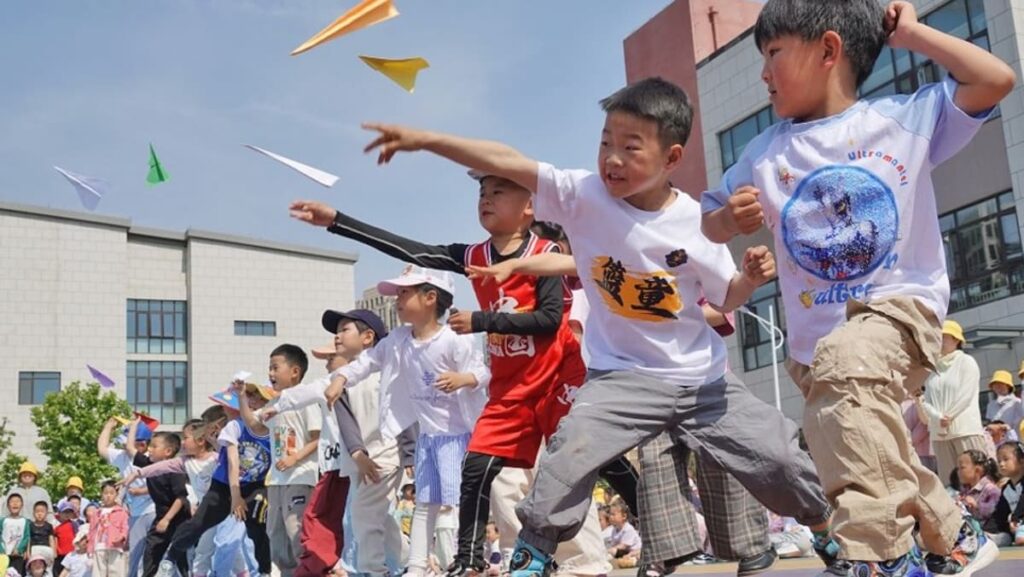Officials have said the measures are intended to cut early education costs, strengthen basic public services and offer education that aligns with people’s expectations.
“The move is to put people first, invest in people,” Chinese Vice Finance Minister Guo Tingting said at a State Council briefing on Aug 7, adding that the policy would benefit around 12 million children and reduce household spending by about 20 billion yuan in the autumn semester alone.
The financial burden will be jointly shouldered by the central and local governments, with the former assuming the greater share, Guo said.
The latest moves reflect a gradual shift towards free and universal education, said Zhou Wang, a professor at Nankai University’s Zhou Enlai School of Government in Tianjin.
He noted that as birth rates fall, particularly in major cities, more families from rural areas may move to urban centres to access preschool services that are typically better funded and perceived as offering higher-quality early education.
“Considering the gap between urban and rural areas in education and public services, this could help children in their growth,” Zhou told CNA.
But Alfred Wu, an associate professor at Singapore’s Lee Kuan Yew School of Public Policy (LKYSPP), cautioned that better preschool access “might only slightly level the playing field”, as rural parents still face a knowledge gap and lack of networks compared with their urban counterparts.
“In the countryside, many families simply don’t know what opportunities exist – they miss out, not just because of money but because of an information gap,” he told CNA.
Ren Yuan, a professor at Fudan University’s School of Social Development and Public Policy, said that preschool spending is closely tied to household income.
“By helping children access care and education services before school age, the policy can support different social groups – especially disadvantaged families – to have a fairer starting point in education,” he told CNA.
DECISIONS AND DIFFICULTIES
For some parents, the fresh support is already reshaping preschool decisions.
Zhang Shuyan, 31, a piano teacher and mother of a 16-month-old in Shenzhen, said she is now considering private options for her child.
“With more subsidies, it makes things easier, and I can choose something better,” she told CNA.
But experts warn that the effectiveness of the 3,600 yuan annual childcare subsidies will be uneven and vary widely across regions due to differences in local costs.
“In provinces like Shandong or Henan, this amount is decent and will be effective … but in cities such as Shanghai, it means almost nothing because housing and other costs are so high,” Su Yue, principal economist at the Economist Intelligence Unit (EIU), told CNA.
While the subsidies target toddlers under the age of three, they highlight broader concerns about early childhood affordability, especially given how widely kindergarten fees vary across the country and even within specific regions.
For instance, in Shanghai, fees at public kindergartens for children in their final year start at 125 yuan a month, rising to about 700 yuan at so-called demonstration kindergartens, regarded as model institutions with higher standards of teaching and facilities.
In Shenyang, the provincial capital of Liaoning, monthly fees at public full-day kindergartens range from 190 yuan per child in rural one-star schools to 950 yuan in top-rated urban ones.
https://www.channelnewsasia.com/east-asia/china-preschool-childcare-subsidies-birth-rate-social-mobility-5319776


